Yamaguchi (山口県) is a prefecture that most Japan travel guides don’t talk much about, or at all, which is a shame because it is one of history, beauty, and memorable food.
Sitting on the tail end of Japan’s main island, Yamaguchi Prefecture is nestled between the Seto Inland Sea and the Sea of Japan. Yamaguchi means “entrance to the mountains”, and true to its name, there are stunning green mountains (yama) almost everywhere you look.
Having lived in Yamaguchi prefecture for three years, I was fortunate enough to be able to explore everything it has to offer and enjoy its delicacies.
Here are some of the top Yamaguchi food specialties to try on a visit.

Table of Contents
Ayu Sweetfish (アユ)
One of the most accessible cities to visit in Yamaguchi is Iwakuni as it is less than an hour by train from Hiroshima station. Iwakuni is primarily known for Kintaikyō, a historical five-arched bridge that is one of the most famous in Japan. However, it also has some unique food as well, such as ayu.
Ayu is a small freshwater fish that is caught using cormorant fishing, which you can witness on summer nights on the Nishiki River in Iwakuni. It is known as a sweetfish as it has a fragrant and sweet scent resembling watermelon or cucumber. The fish is served in many ways but typically it is seasoned with salt and skewered before being grilled.
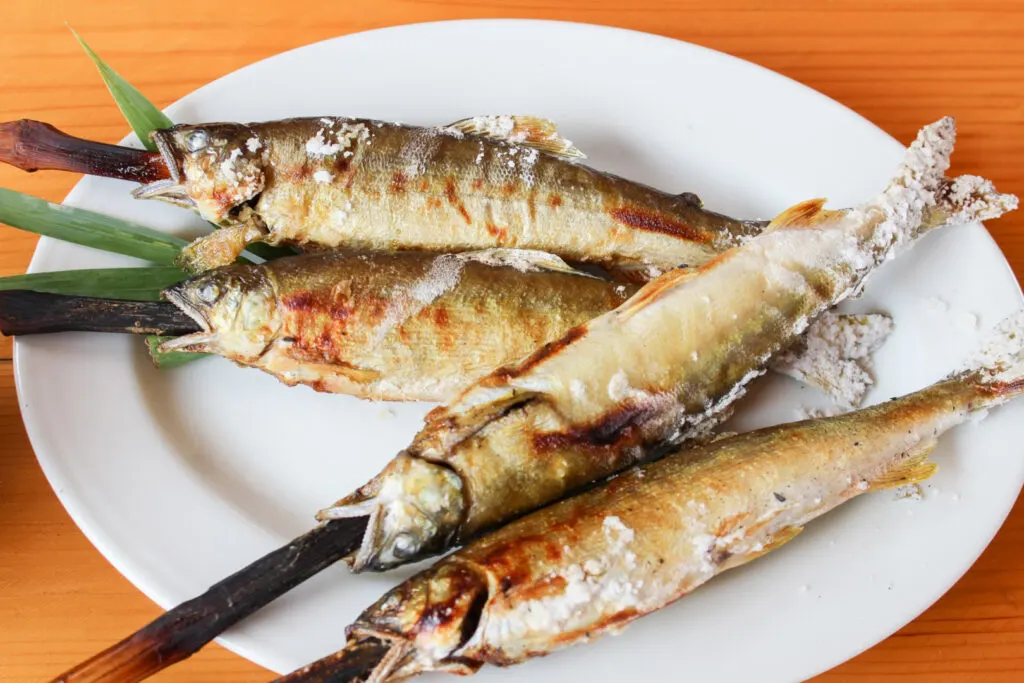
If you feel truly adventurous, you can also try ayu in… ice cream? If you cross Kintaikyō, there’s a shop called Shokujidokoro Musashi that sells 100 flavors of ice cream, including one with ayu inside! I haven’t tried this particular flavor, but a friend of mine reported that the vanilla ice cream surprisingly complements the ayu.
The Fushinogawa Fisheries Cooperative Association in Yamaguchi Prefecture has also developed a type of ayu called Kanmi Ayu (柑味鮎, かんみあゆ), which smells like citrus. Their logic was that if ayu developed their sweet smell from feeding on moss, perhaps they could change the scent by feeding them mikan (mandarin orange), and it worked! Changing their diet to mikan also helps with softening the flavor and removing any bitterness.
Note that reference to cormorant fishing is for informational purposes only and does not represent Japanese Food Guide’s position on this practice. JFG strongly urges visitors to avail themselves of what this tradition entails – including the capturing of wild birds, wing clipping and the forcible removal of fish from the cormorants’ throats – before deciding to participate in cormorant fishing tourist activities.
Iwakuni Sushi (岩国寿司, いわくにずし)
Another dish to try while you’re in Iwakuni is the local Iwakuni Sushi (pronounced “Iwakuni Zushi” in Japanese). This is similar to a pressed chirashi-zushi consisting of sushi rice with a number of colorful toppings, such as egg, sakura denbu (fish from the Seto Inland Sea mixed with red food coloring), shiitake mushrooms, and sliced renkon lotus root, which Iwakuni is also famous for growing.
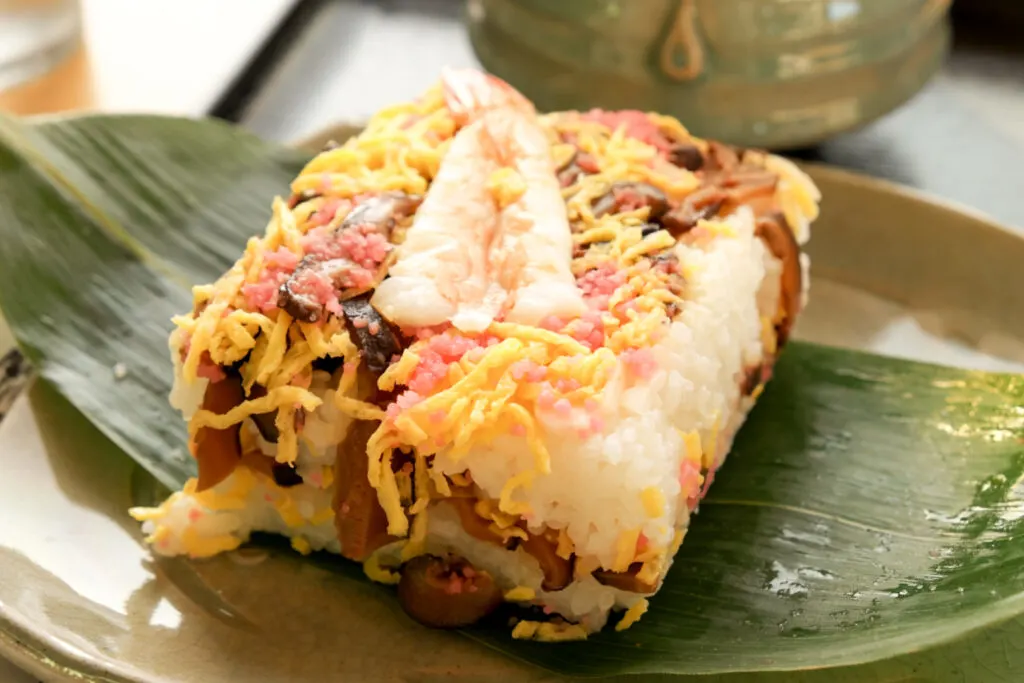
It’s believed that this sushi was created over 300 years ago as a type of preserved food for the samurai in Iwakuni when they were preparing for battle. This is why it is quite large when it’s prepared with its traditional five layers, almost like a giant sheet cake, before being cut into portions.
Nowadays, it is common to see only one or two layers of Iwakuni Sushi, which is typically enjoyed during special occasions. But of course, it’s readily available in Iwakuni for visitors to the city to experience eating as well.
Sanzoku Yaki (山賊焼, さんぞくやき)
Sanzoku Yaki is a substantial piece of chicken thigh that is skewered on a huge stick and then grilled (yaki) over a hearth. It’s juicy with perfectly crisp skin that is coated with a delicious teriyaki sauce and has a hint of smoke from the grill.
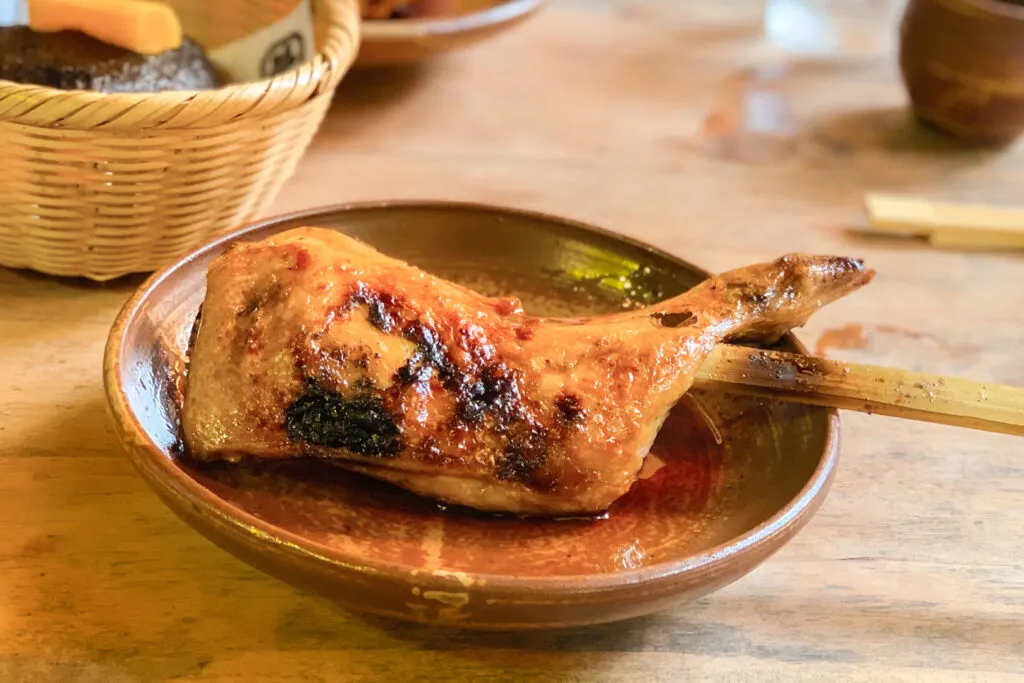
Sanzoku means “mountain bandit” and in Iwakuni you can experience having Sanzoku Yaki at Irori Sanzoku, a restaurant that I can only describe as what I would imagine a bandit’s hideout to look like in the mountains. There is absolutely no experience like it, especially if you go at night.
When it’s cold, you can sit under a kotatsu and enjoy some Sanzoku Yaki and hot sake while looking at the numerous glowing lanterns and listening to the sound of waterfalls. Their gyoza and giant rice balls are a must as well.
Given it’s most easily accessible by car and it’s a fun and exciting place to go, Irori Sanzoku is said to be one of the first recommended places for people in the area to visit after getting their driver’s license, and I can’t think of a better way to celebrate (minus the alcohol for the driver, of course)!
Kawara Soba (瓦そば, かわらそば)
This is one of my favorite dishes as it’s both visually appealing and tastes amazing. The brainchild of Shinichi Takase, who was inspired by soldiers who cooked meat and wild grass on kawara tile during the Seinan War in 1877, Kawara Soba consists of cha soba noodles (‘cha’ meaning tea) served on a hot kawara tile, which gives the noodles a crunchy texture.
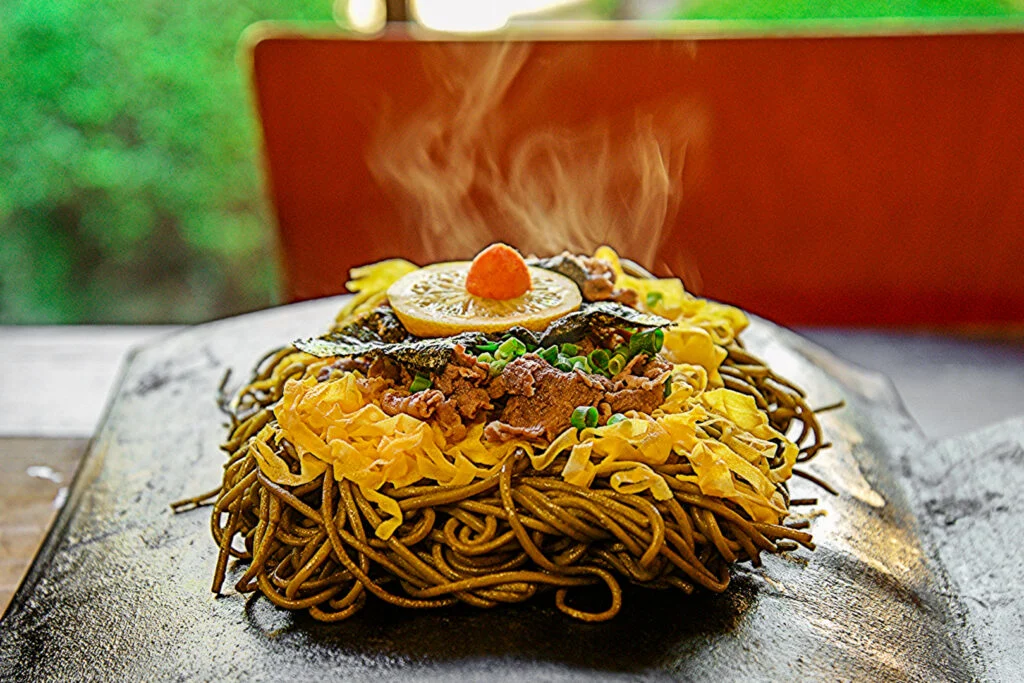
As the name suggests, cha soba noodles contain green tea, making the color contrast beautifully with the black kawara. The noodles are also topped with thin slices of fried beef, nori seaweed, green onion, momiji oroshi (grated daikon radish with chili), and lemon slices, giving it a lovely presentation.
Similar to zaru soba, or a cold soba dish, the noodles are dipped into a soy sauce-based soup when eating but you can also try the noodles straight from the tile, allowing you to experience different flavors and textures.
Kawara Soba is especially popular in Shimonoseki, which is the largest city in Yamaguchi Prefecture, and you can even eat at Ganso Kawara Soba Takase where Kawara Soba originated in 1962.
Bari Soba (ばりそば)
This dish is comprised of crunchy (bari) fried noodles topped with fried seasonal ingredients from both mountain and sea, such as seafood, cabbage, mushrooms, and bamboo shoots.
Although it looks similar to Sara Udon in Nagasaki, another meaning of bari in Yamaguchi dialect is to “heap on” or a generous amount, so this dish is much larger and more filling. Bari Soba also contains a chicken-based broth while Sara Udon’s broth is pork-based.
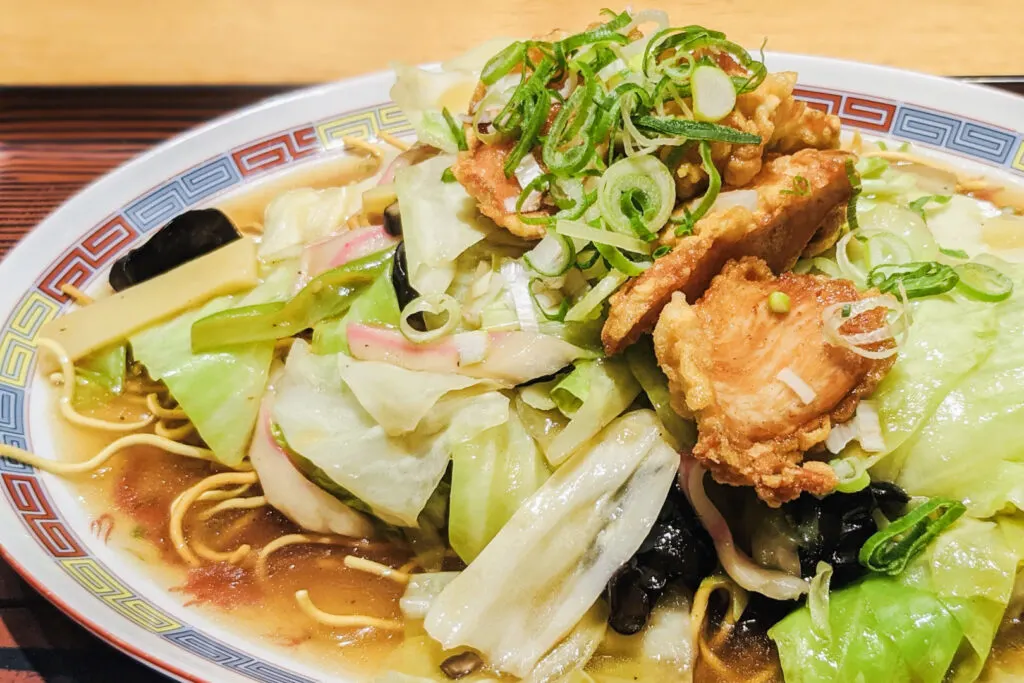
Fugu (ふぐ)
Fugu is blowfish and, depending on the person, can either be a frightening or an exciting dish to eat since certain parts of the fish are toxic. Of course, the poison-containing parts are carefully removed by skilled licensed chefs before being served to patrons, which is one reason why it’s a delicacy in Japan.
If you’re not a fan of fishy food, you’ll likely enjoy fugu as the taste is quite subtle and delicate. It’s also served in various ways, such as in soups, as tempura, or fried. I recommend having it sashimi-style with ponzu sauce.
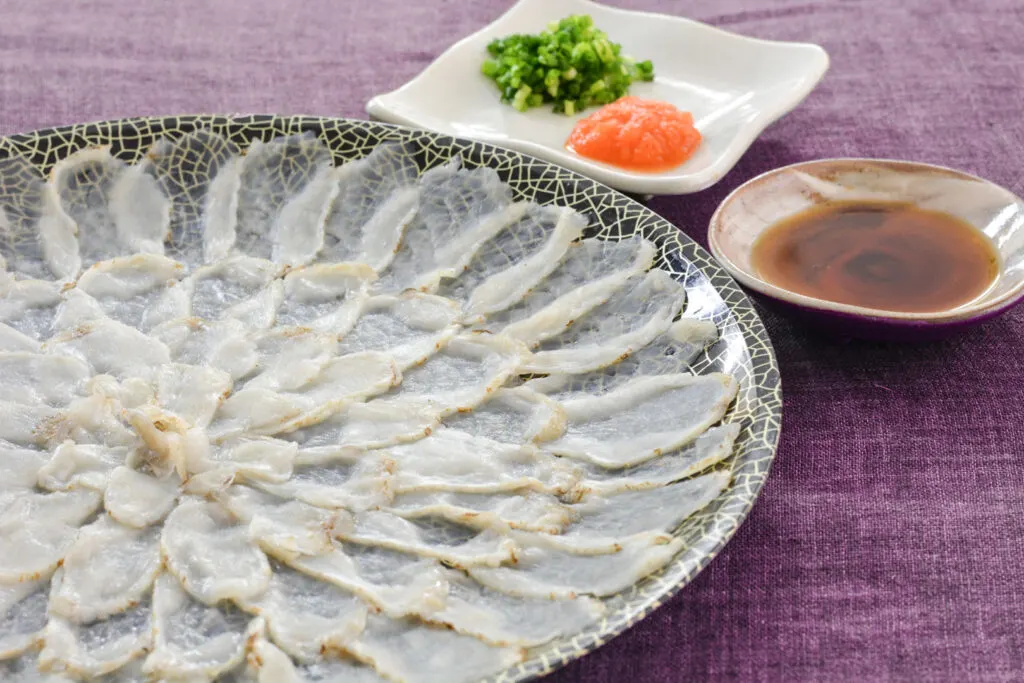
For those looking to try fugu, head down to Shimonoseki City. The waters along Shimonoseki’s coast are abundant in fugu, which is one key reason why this city processes the most fugu in Japan.
There are several restaurants where you can have fresh fugu but for the best, try Shimonoseki’s famous fish market, Karato Market, or restaurants in Kamon Wharf. And fun fact — although blowfish in Japanese is fugu, people in Shimonoseki call it fuku, meaning luck!
Kasado Hirame (笠戸ひらめ, かさどひらめ)
This type of flatfish (ひらめ) is local to Kasado Island in Kudamatsu City. Similar to fugu, it has a firm texture but it is also fatty and thick with a hint of sweetness to it. It’s said that the fish tastes more flavorful the more you chew it.
Kasado Hirame is served in several different ways, such as boiled, fried, grilled, or as sashimi or shabu shabu.
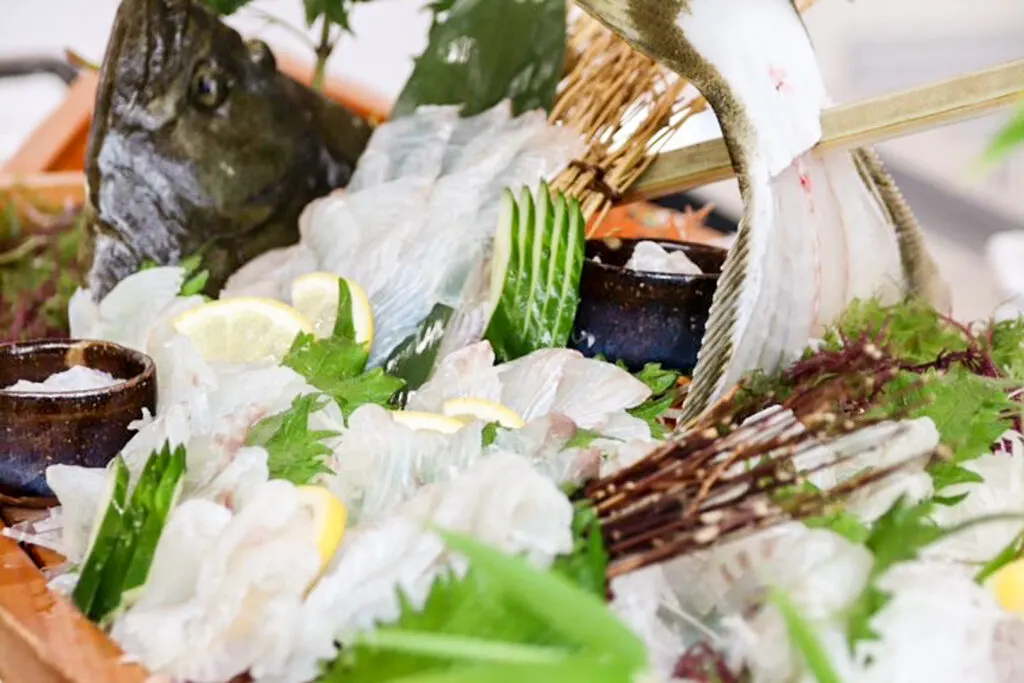
Uirou (外郎, ういろう)
This wagashi, or Japanese confectionary, is a rectangular-shaped steamed rice cake that comes in various colors and flavors.
Uirou can be found across Japan but Yamaguchi is particularly famous for their version as instead of glutinous rice, it’s made out of warabi starch that gives it a chewy yet smooth and delicate taste, almost like a high-quality gummy.
This confectionery is commonly used in tea ceremonies but also makes a perfect souvenir, which is why it’s easy to find Uirou in souvenir shops across the prefecture. However, if you want to try freshly made Uirou and possibly experience a factory tour, I suggest visiting Taharaya in Yamaguchi City.
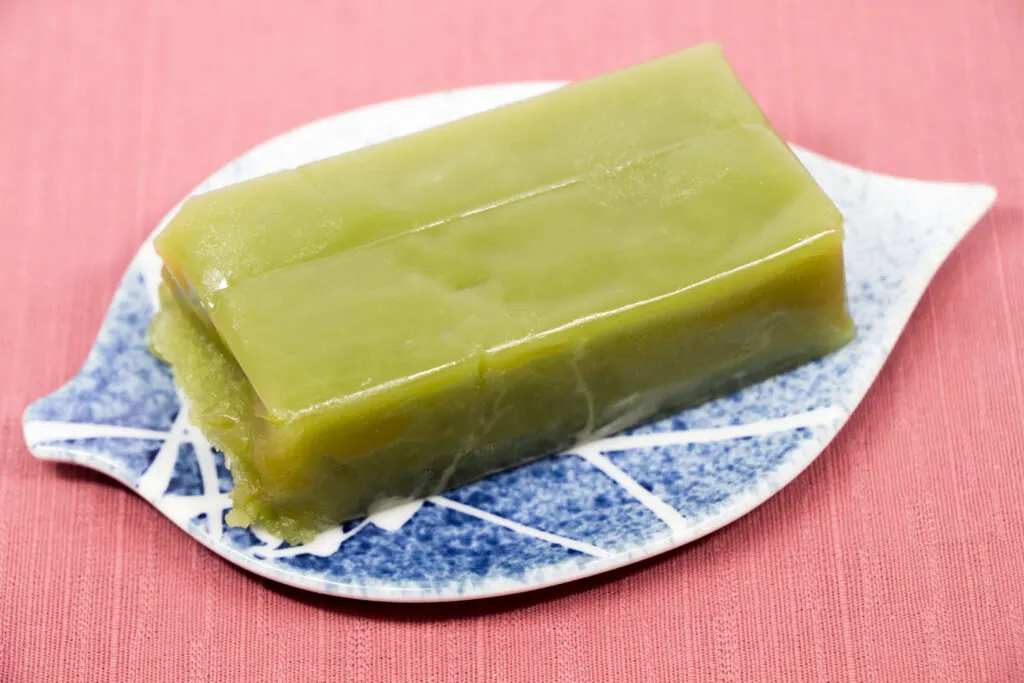
Nihonshu (日本酒, にほんしゅ)
Situated among both land and sea, Yamaguchi Prefecture’s location has made it an ideal environment to grow the perfect rice for delicious sake (known as Nihonshu in Japanese).
Iwakuni City alone boasts five sake breweries and among these is Asahi Shuzō, which is responsible for making Dassai, one of the most well-known and highly-regarded sake brands in Japan. Dassai, a Junmai-Daiginjō sake (the highest grade), is light and smooth with a fruity yet complex taste to it, making it popular even among those who aren’t the biggest fans of sake. Pair it with some fugu and you’re golden.
If you’re in Yamaguchi Prefecture in the fall, you might want to check out Yuda Onsen’s sake festival where you can try various kinds of local sake and food as well as enjoy performances.
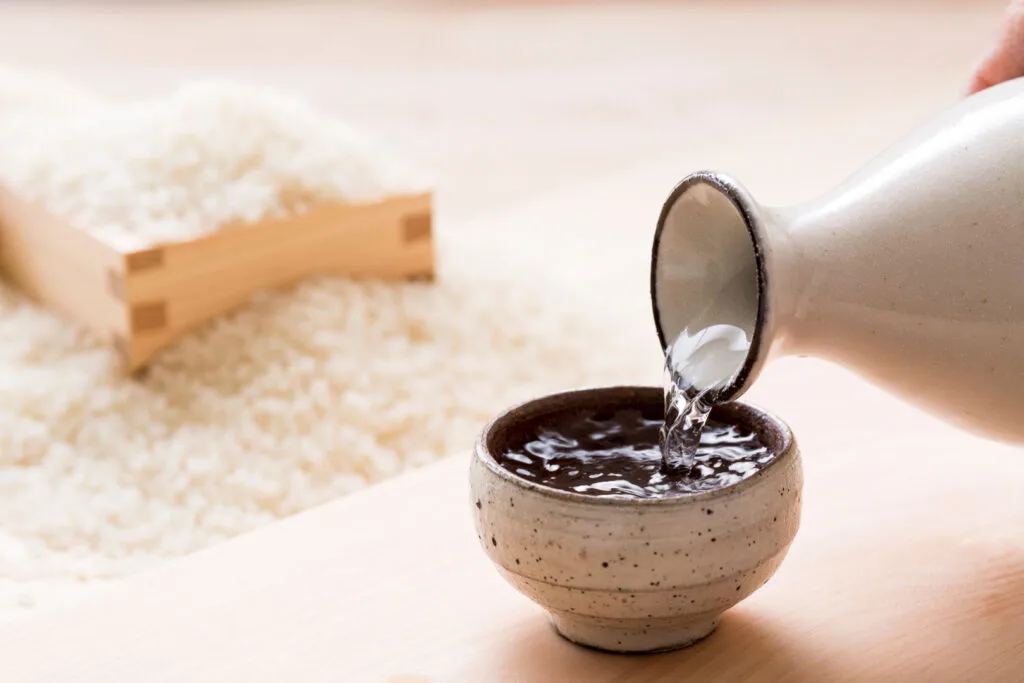
Now that you’re acquainted with all of the wonderful food Yamaguchi Prefecture has to offer, I hope you take the time to visit – you won’t regret it!
What Yamaguchi food would you like to try first?
Pin me for later
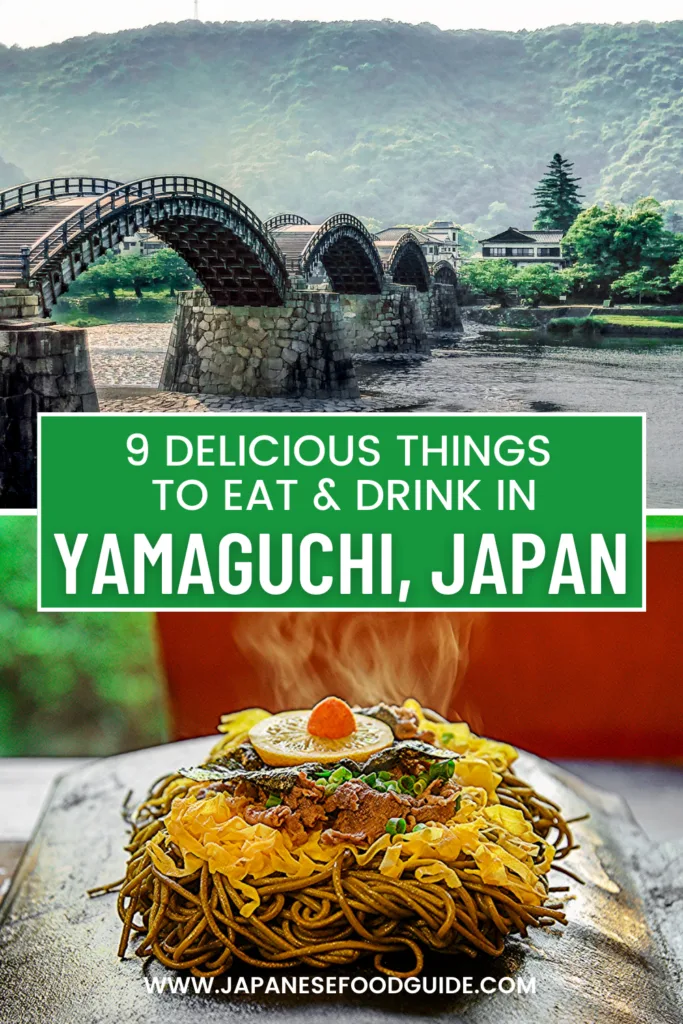
Kay is a Canadian freelance translator and writer who has been in Japan for more than a decade. Having lived in the Chugoku, Kanto, and now the Kansai regions, she hopes to share their various local cuisine on JFG.
She also writes about her experiences being a mother in Japan on her website, Tiny Tot in Tokyo.
